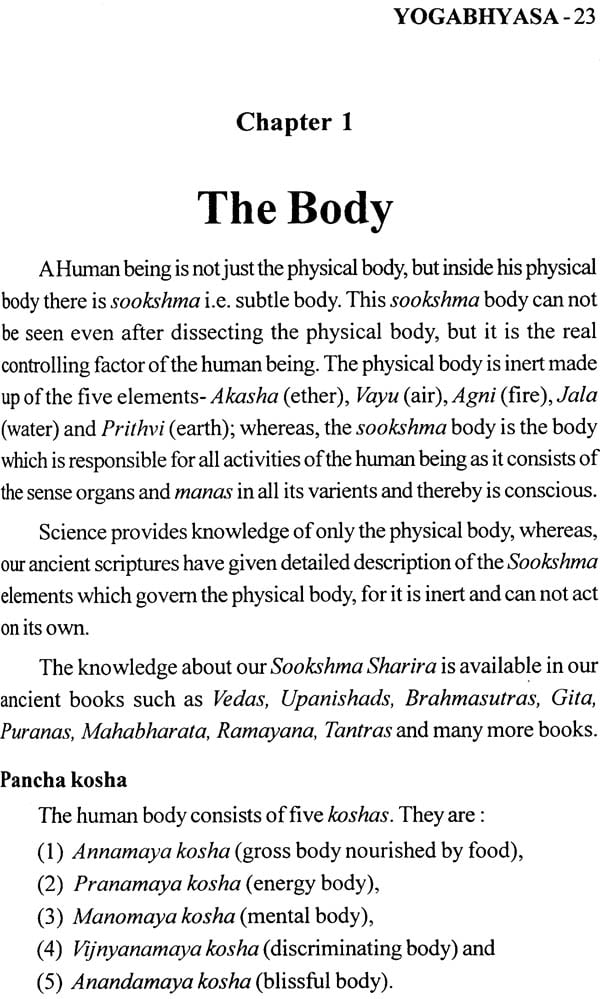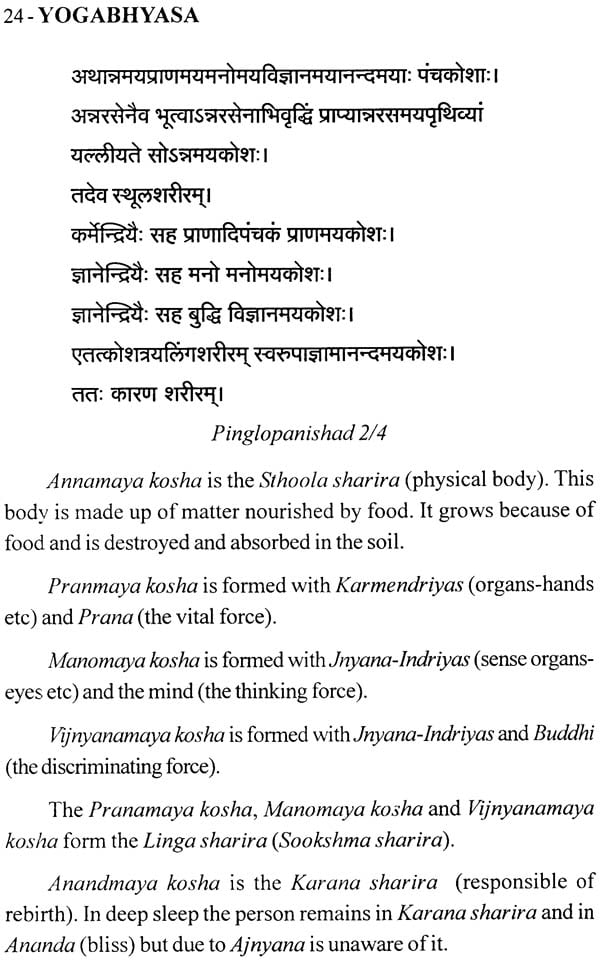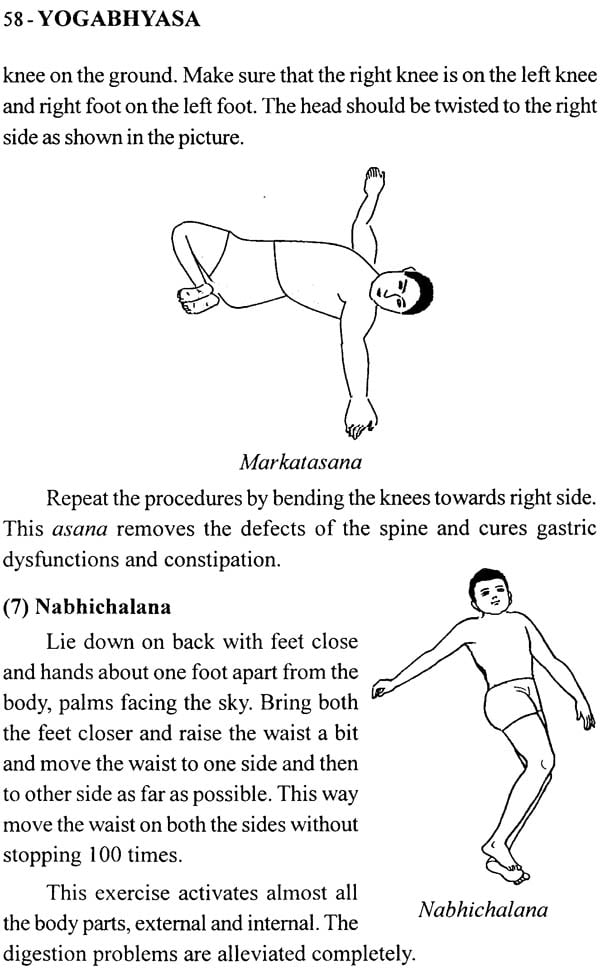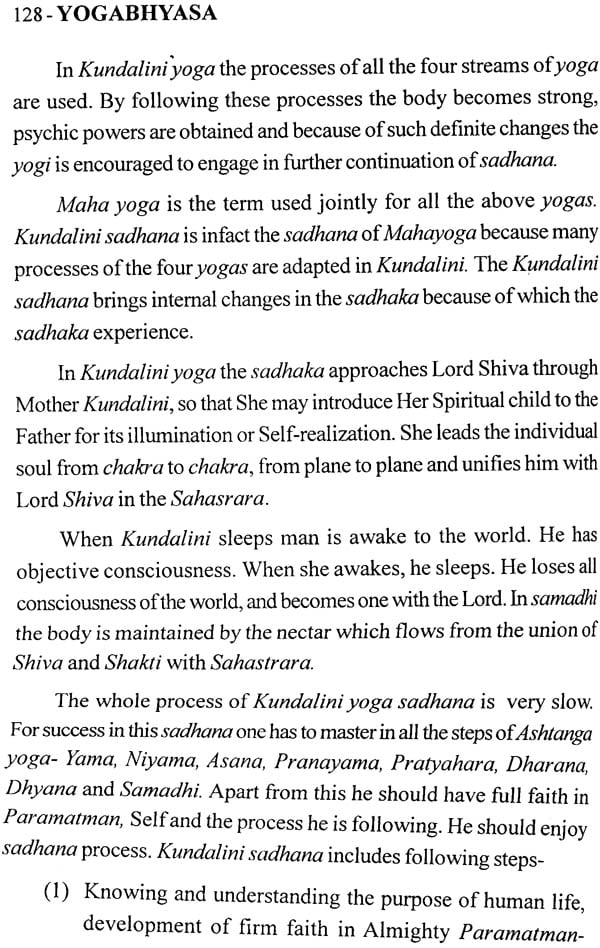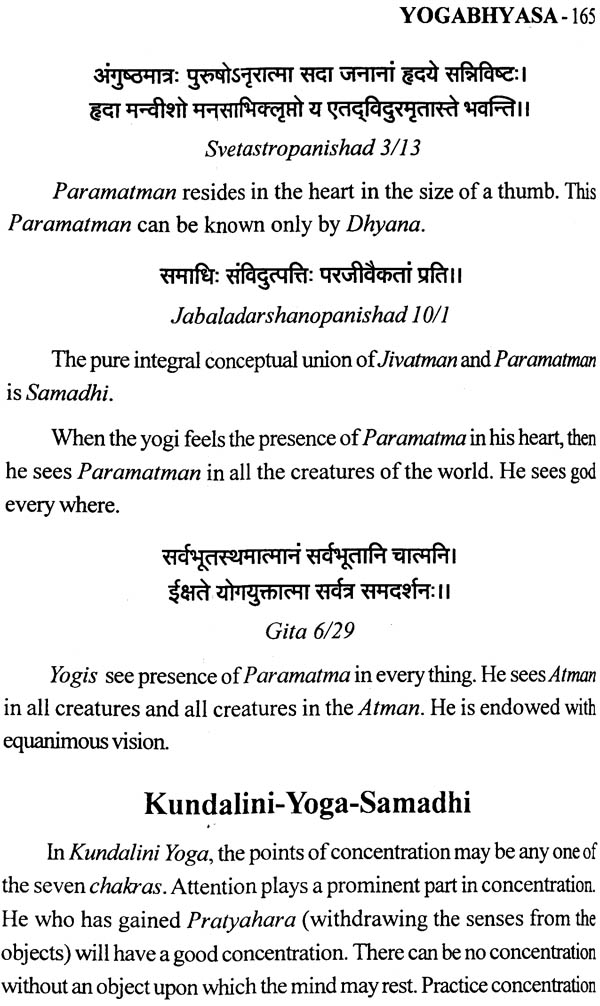
Yogabhyasa
Book Specification
| Item Code: | NAH235 |
| Author: | Dr. B.R. Patle |
| Publisher: | GIRI TRADING AGENCY PVT LTD,CHENNAI |
| Language: | Sanskrit Text with English Translation |
| Edition: | 2012 |
| ISBN: | 9788179505502 |
| Pages: | 192 (49 B/W Illustrations) |
| Cover: | Paperback |
| Other Details | 8 inch X 5 inch |
| Weight | 220 gm |
Book Description
About the Author
Born on 31 March 1938, in a farmer family, Dr. B.R. Patle served Veterinary Science in various Veterinary Colleges of M.P. India, on various Scientific and Administrative posts and retired in the year 1998. He has published more than fifty research papers in the field of Animal Nutrition in various reputed Indian and Foreign journals and has written one book on Poultry and one on Dairy in Hindi language. In recognition to his research work he has been bestowed with three prestigious National awards including the reputed Rafi Ahmed Kidwai Prize.
He developed his interest in Spirituality when he heard Spiritual discourse of Bhagawan Sri Sathya Sai Baba in Puttaparthy in the year 1976. Since then he has been striving in the field of Spirituality, acquiring Spiritual knowledge by reading sacred books and practicing Yoga. To disseminate the aquired knowledge and experience for the benefit of the fellow human beings the author has already got published two books in Hindi namely.
The author has been assoicated with Sri Sathya Sai Seva organization for a long time. His sons Anil, Sunil and Sushil have worked in the Institute of Higher Medical Sciences Prasanthigram, Puttaparthy. Beloved Bhagawan Sri Sathya Sai Baba has been very kind and savior to the author and his family.
The present book Yogabhyasa in English deals with practical aspects of Yoga for Body, Yoga for Mind and Yoga for Spirit. The Yoga practices described in the present book are those which are regularly being practiced by the author with enormous benefits. The manuscript of this book has been blessed by Bhagawan Sri Sathya Sai Baba on 30-8-2010.
Preface
Blessed Lord, the creator of the universe, has in this wonderful creation of His created men, animals, flora and other life forms. All these life forms are endowed with various levels of intelligence. While the animals and others are endowed with intelligence to survive, men are blessed with a superior intelligence, which shastras call as Viveka. The natural tendency of all living beings is to obtain food for survival, to sleep to get rest from the efforts made for survival and to engage in reproduction for the preservation of the species. In addition to these natural tendencies human beings have been bestowed with Viveka. Viveka is the power to differentiate between right and wrong. If they do not gain this Jnyana, put their gift to best use, then humans ought to be treated as equal to animals.
All creatures spend their lives in eating, sleeping and reproducing. Only those who acquire Jnyana can be called as human beings.
With the power of Viveka the human beings can control the Natural tendencies and improve their Spiritual status and thereby they can aquire Jnyana. Jnyana is the true knowledge of one’s identity, about unity of Atman (Self) and Paramatman (God).
The impediment in the Man’s path to this realization is the misapprehension about the Self, misapprehension of its identity. Man normally relates himself with the body- ‘I’ am strong, ‘I’ am weak. He also relates himself with the Manas (mind)- ‘I’ am happy, ‘I’ am worried etc. But at no time does he ever relate himself with Atman (spirit). In fact he is Atman, which is the reflection of Paramatman. The day he realizes this, he will acquire Divine qualities. But this knowledge cannot be realized or understood without conviction by those immersed in mundane matters. It is only when the intellect is made clear and penetrating through Sadhana, including Yoga, that this truth can be revealed.
The purpose of Sadhana is Self-Realization. The ancient Indian Saints were successful in Self-Realization and suggested various methods of Sadhana for all categories of human beings from which one could select the process of Sadhana suitable for him.
Yoga is one such Sadhana which can be adapted for holistic growth of human personality-Physical, Mental and Spiritual by all. At present, this Sacred Science of Yoga has been misunderstood by referring to only Aasanas (the physical exercices) or Pranayama.
The true meaning of Yoga is, ‘‘union of Human Spirit with Divine Spirit.” The methods used to obtain this goal are also called Yoga. The practice of Yoga has been variously named, viz.- Karma Yoga, Bhakti Yoga, Jnyana Yoga, Mantra Yoga, Hatha Yoga, Laya Yoga, Raja Yoga, Maha Yoga and Kriya Yoga. It is to show the applicability of the term Yoga to refer also to means all the eighteen chapters of Gita have been described as eighteen Yogas- (1) Vishaada Yoga, (2) Sankhya Yoga, (3) Karma Yoga, (4) Jnyana Karma Sanyasa Yoga, (5) Karma Sanyasa Yoga, (6) Atmasanyasam Yoga, (7) Jnyana- Vijnyana Yoga, (8) Akshara-Brahma Yoga, (9) Rajvidya-Rajguhya Yoga, (10) Vibhuti Yoga, (11) Vishvarupdarshana Yoga, (12) Bhakti Yoga, (13) Kshetra-Kshetragya Vibhyaaga Yoga, (14) Gunatraya Vibhaaga Yoga, (15) Purushottama Yoga (16) Devaasursampad Vibhaga Yoga (17) Sradhatraya Vibhaga Yoga and (18) Moksha- Sanyasa Yoga.
Before the Divine Darshan of Bhagavan Sri Satya Sai Baba, i.e. before 1976 the author of this book was not aware of Spirituality. He was suffering from various ailments such as Spindolitis, glaucoma, prostrate, blood pressure, tension etc. Reading the literature of Sri Satya Sai Baba and other spiritual books developed the interest in Yoga and ultimately he was successful in developing a suitable line of yogic practices. This Yogabhyasa practice has benefited the author enormously. The yogic practices described here may be different from those followed by the renunciate, who give up many of the worldly activities and interests, in order to devote more time and energy to the goal of liberation. The process described in this book is for a householder who aspires for a simple healthy and devotional life to pursue higher values in life without abandoning the purpose of worldly interests.
Introduction
The motive force behind every living being is Sat (perfect existence), Chit (knowledge) and Ananda (bliss), a fact observed from man's attempt in life to seek knowledge and his pursuit of happiness. The religious scriptures describe that the attributes Sat-Chit-Anand are attributes of God. This shows that the human beings have same attributes as that of the God. The realization that the man is not essentially different from the God, is Self-Realization. This fact has to be realized by the human beings to be happy in life.
In general, happiness is sought in worldly things and sensory enjoyment. But this happiness is very temporary and fades as soon as it is obtained. As soon as one desire is fulfilled many others arise and the sequence is never ending as no person is ever entirely satisfied with anything materialistic. Thus truly the spirit of happiness is never enjoyed. The ceiling of desires is therefore necessary. Permanent happiness is inherent in oneself and therefore is obtained when one starts his journey towards his source- the Paramaatman. This can be achieved by working as per His wish. The greatest purpose of life is to be instrument of the Divine.
Real happiness is obtained through meditation on Brahman, not by accumulating materials of enjoyment through senses. The sorrow or unhappiness occurs when a person becomes slave to his sensual pleasures.
Yogis have realized that unhappiness is the outcome of sensual pleasure, and are cautious about sensual pleasures in the same way as one would be about poisoned food.
The happiness obtained through senses is temporary. When the senses contact the object which brings pleasure sensations as long as the contact lasts, they create adulterated forms of happiness. One has to work for perfection, for the attainment of limitless existence, absolute knowledge and limitless happiness if one desires pure, unadulterated bliss.
We seek enjoyment through senses mainly because of the ahankara or individualist ego-consciousness. We attach ourselves to the body and spend all our energy to fulfill the selfish motive, collecting materials for bodily comforts, sensual desires and nursing the ego. The desire for possessions, to keep and add to one's possessions, is called Vasanaa. We become attached to the possessions, to transitory things of life and from this viscious cycle we never come out and thus we never get happiness.
Senses work solely for the benefit of mind. The mind, however, is another servant, a sort of supervisor, who sorts and organizes and puts things in their proper places. Mind has to be diverted inwards. Without turning introvert, without engaging the mind in inquiry, man cannot escape misery caused due to attachment.
The human body consists of three spheres- physical body (Sthoola Sharira), mind (Manas) and Atman (Spirit). Man identifies himself with either the body or the mind and such a super imposition is called a dhyasa.
In fact Atman is the true identity of a person, his true' I' , and body and mind are instruments in worldly transactions. To realize one's identity is termed as liberation.
Mind is said to be a bundle of desires. When mind is surrendered to Almighty Paramatman then human desires get replaced by the Paramatma S will and he experiences complete Bliss. The mind diverted towards the world is the cause of bondage, whereas, the mind urrendered to Paramatman is instrumental in liberation.
The same idea is eschewed in Gita where Krishna states that- Mind is responsible both for bondage and liberation. Mind attached to the worldly desires and as a follower of the senses causes bondage, whereas, the mind free from these liberates the man.
Happiness: Unadulterated happiness is the condition of consciousness in which there are no cravings of any kind, no conflict, no worry, no suffering, and no limitation of any sort.
Worldly happiness is experienced through the agency of Manas. Manas is inner sense-organ. Based on the functions, the same Manas is known by four terms - Manas, Buddhi, Chitta and Ahankara. When Manas is busy in thoughts it is called Manas. When Manas functions as discrimination between right or wrong it is called Buddhi. When Manas acts as a store house of memories of various past lives , (Samskaras) it takes the name of Chitta. When the Manas makes the man feel that he has separate identity and makes him responsible to suffer the fruits of his karmas (deeds), then it is called Ahankara.
The physical body, the prana, the manas, the intelligence, the ahankara are the part of Prakriti. Prakriti (material cause of the world) is unreal, because it is always changing. Atman does not change, hence it is real. To find true happy life, man has to discriminate between the real and the unreal. Existence of Atman, as an entity separate from one's body can be known from the experience of three-fold state of experience- waking, dream and deep-sleep.
Contents
| Chapter 1 | The Body | 23-51 |
| Chapter 2 | Asana Vyayama | 52-83 |
| Chapter 3 | Yoga | 84-136 |
| Chapter 4 | Daily Sadhana | 137-179 |
| Glossary | ||
| Epilogue |
